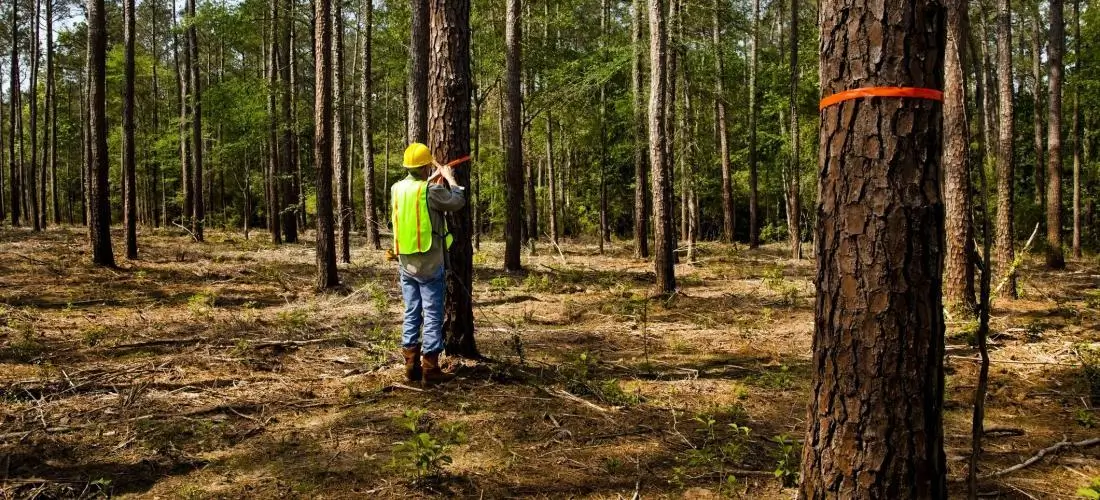
Understanding the Forestry Development Authority | Its Role, Impact, and Future
- Ventscripe Staff
- July 24, 2025
- News
- Forestry Development Authority
- 0 Comments
Forests are vital to maintaining the balance of our ecosystems, protecting biodiversity, and combating climate change. The precious natural resources they provide require an effective management system to ensure their conservation and sustainable utilization. In a lot of countries, specialized institutions are created to oversee forest protection and development. One of these institutions is called the Forestry Development Authority (FDA), which plays an important role when it comes to the management of forest resources. This blog focuses on the role, as well as the history and importance of the FDA and its impact on the economy, environment, and the overall society.
What is the Forestry Development Authority?
The Forestry Development Authority (FDA) is a government agency that is responsible for managing the forests of a nation. The FDA is responsible for ensuring that forests are managed responsibly while also preserving biodiversity and preventing the deforestation of forests. The FDA generally oversees the implementation of forest policies, management of forests, as well as regulations for the wood industry.
The principal goal for the FDA is to ensure that there is a balance between the growth of the economy and environmental conservation. This means encouraging the development of forests, encouraging sustainable logging practices, ensuring that reforestation is achieved, as well as promoting the general health and well-being of the forest ecosystems. The country in which the FDA is located, the specific responsibilities of the FDA will differ; however, the ultimate goal is the same, that is, to sustainably manage the forest resources of a country to benefit the next generation.
The History and Establishment of the FDA
The creation of Forestry Development Authorities was motivated by the need to address ever-growing concerns regarding the depletion of forest reserves, specifically in the developing world. As the rate of industrialization and population growth intensified, forests were being cleared for logging, agriculture and urbanizationurbanisationurbanization. In many instances, this destroyed ecosystems that were valuable ecosystems and caused loss of biodiversity.
The establishment of a central organization, such as the FDA, was a crucial way to address these issues. In countries such as Liberia, for instance, the FDA was established to oversee the forest resources of their diverse and rich forests and ensure that they were not abused recklessly. The FDA was established in 1976. Liberia Forestry Development Authority (LFDA) is one of the examples of a body that is responsible for the sustainability of forest management. Many other countries have followed similar patterns in establishing organizations that are devoted to managing their forest resources.
Key Functions of the Forestry Development Authority
The FDA has a variety of roles in directing forest resources. Here are a few of the most important responsibilities and functions that the FDA:
Sustainable Forest Management
One of the most important responsibilities for the FDA will be to make sure that the forests are being managed sustainably. This includes ensuring that the harvesting of wood products is done in a way that doesn’t deplete resources that will be available for the next generation. The FDA strives to balance the needs of the interests of business, like the paper and wood industries, against conservation and environmental protection needs.
Sustainable forest management usually involves the setting of quotas for cutting down on logging, establishing protected zones and implementing reforestation programmes. Through this, the FDA assists in preserving the biodiversity of ecosystems in the forest and also supports local economies that depend on the forest’s resources.
Regulation and Oversight of Logging Activities
One of the primary responsibilities of the FDA is to oversee logging operations. This includes granting permits for harvesting timber and ensuring that the operation is in compliance with environmental standards, and monitoring the logging process. In addition, the FDA has to ensure that the logging takes place in a way that does not lead to the overexploitation of forests, illegal logging and the degradation of the forest ecosystem.
To combat illegal logs to stop illegal logging, the FDA can also work with police agencies to investigate illicit activities and place penalties for offenders. This is crucial for the preservation of the forests of the country and for maintaining the sustainability of the timber industry.
Forest Conservation and Biodiversity Protection
The FDA is charged with safeguarding biodiversity in forests. This includes preserving and managing ecosystems that house many species of animals and plants. Forested areas can be the habitat of endangered species, and the FDA assures that the species are protected by implementing conservation measures, for example, establishing protected zones as well as wildlife sanctuaries, and promoting ecological research.
In protecting the biodiversity of forests, by ensuring the protection of forests’ biodiversity, the FDA will also make sure that forest ecosystems will continue to provide vital ecological services, such as purification of water and air, carbon sequestration, as well as the control of soil erosion.
Promoting Reforestation and Afforestation
The forests of the world are in danger due to degradation and deforestation. The FDA is an integral part of stopping this trend through the process of afforestation and reforestation. Reforestation is the process of replanting trees that have been removed from or damaged. Reforestation, on the other hand, is the process of creating new areas of forest in the regions which were never previously forested.
Through these efforts, the FDA aids in reducing the effects of climate change by increasing the storage of carbon in forests, improving habitats for wildlife, as well as improving the overall resilience of the landscape to natural disasters, such as droughts and floods.
Research and Development
To enhance forest management practices and conservation efforts to improve conservation and forest management practices, the FDA is frequently involved in development and research activities. This includes studies of forest health as well as biodiversity and climate change, and also developing new techniques to manage forests sustainably.
Research initiatives assist the FDA in remaining informed about the most recent advancements in forest management, and help it adapt the practices of the agency to new problems, including the impact of climate change as well as invasive species.
Economic and Social Impact of the Forestry Development Authority
The work performed by the FDA has profound social and economic impacts. Here are a few ways that the FDA helps to improve the health of economies and societies:
Job Creation and Economic Growth
The forestry industry is an important contributor to the economy, especially in rural regions. In regulating the sustainable harvesting of products from forests, the FDA assists in creating jobs in the fields of paper and pulp production, and furniture manufacturing. In addition, forest-related activities help aid in forest monitoring, research and conservation efforts.
The FDA can also assist in the development of industries based on forests, like eco-tourism, that can be a source of revenue and growth in the economy.
Community Engagement and Livelihoods
Forests are a vital part of the existence of a number of communities, specifically those who rely on forests for fuelwood, food and other sources. The FDA’s efforts ensure that communities can access resources from forests with a sustainable approach.
Involving local communities in the management of forests. By involving local communities in forest management, the FDA creates a sense of responsibility, and allows individuals to benefit from the forest and maintain its good health. In addition, community-based conservation programs can be implemented to empower communities to take a more active part in the protection of the natural assets of their communities.
Climate Change Mitigation
Forests are crucial in reducing climate change because of their capacity to absorb carbon dioxide. The FDA’s role is to promote the reforestation process and sustainable forest management practices aid in increasing carbon sequestration and reducing the impact of climate change.
Through monitoring forests and making sure that they are properly maintained by ensuring they are kept, the FDA plays a crucial role in fighting global warming. Forests also function as natural barriers against natural disasters, such as floods, landslides, or droughts, which are becoming more frequent and severe because of climate change.
Challenges Faced by the Forestry Development Authority
Although the FDA has a significant role in the management and conservation of forests, it has several obstacles which could limit its efficiency:
Illegal Logging and Deforestation
Illegal logging is one of the biggest dangers to forests, especially in countries that have weak enforcement of regulations and laws. Despite the efforts of the FDA to address illegal logging, the activities continue to erode forests, degrade legal timber industries and cause the degradation of the environment.
Funding and Resources
Achieving effective forest management requires funds and resources. The ability of the FDA to fulfil its responsibilities typically depends on the budget of the government, which may be skewed. In many instances, there’s a deficiency of funding for crucial programs such as reforestation or forest monitoring.
Climate Change and Forest Degradation
Climate change is the forest with a direct threat to ecosystems, impacting their health of their ecosystems and productivity. The FDA has to deal with the issues that are posed by changing weather patterns, droughts and extreme events that destroy forests.
The Future of Forestry Development Authorities
The function that Forestry Development Authority Forestry Development Authority will continue to grow as the world is confronted with ever-growing environmental challenges. As time goes on, there will be a greater focus on integrating adaptation to climate change along with sustainable development in the forest management strategies.
Collaboration with local communities, international organizations, as well as private sector players is essential to reaching long-term sustainability of forests. The FDA’s contribution to reducing the impact of climate change, preserving biodiversity, and ensuring economic forest benefits will be crucial in attaining the global goals of sustainable development.
Conclusion
The Forestry Development Authority plays a vital role in making sure that forests are sustainably managed and preserved for the next generation. Through its many tasks, from regulating logging to encouraging regeneration, the FDA aids in ecological conservation as well as economic growth and the health of communities. Even though there are challenges to overcome, including illegal forest logging and climate change, the FDA’s efforts continue to be vital to safeguard forest health for the long-term, which is essential for the conservation of biodiversity, climate regulation and the lives of millions across the globe.
FAQ’s
What is the Forestry Development Authority (FDA)?
The FDA is a government agency responsible for managing and conserving forest resources to ensure sustainable use while protecting biodiversity.
Why was the FDA established?
The FDA was created to address concerns over deforestation and unsustainable logging practices, ensuring that forests are managed for future generations.
What does the FDA do?
The FDA oversees sustainable forest management, regulates logging activities, promotes reforestation, and protects biodiversity in forest ecosystems.
How does the FDA contribute to the economy?
The FDA supports job creation in industries such as logging, timber production, and eco-tourism, contributing to rural development and economic growth.
What are the challenges faced by the FDA?
Key challenges include illegal logging, limited funding, climate change impacts, and the need for better enforcement of forest management regulations.
How does the FDA help fight climate change?
The FDA helps mitigate climate change by promoting reforestation, afforestation, and sustainable forest management practices that enhance carbon sequestration.
How does the FDA protect biodiversity?
The FDA conserves wildlife habitats by managing protected areas and implementing conservation programs to safeguard plant and animal species.
What is sustainable forest management?
Sustainable forest management involves using forest resources in a way that meets current needs without compromising the ability of future generations to benefit from them.
How can communities benefit from the FDA’s work?
Local communities benefit through access to forest resources for livelihoods, as well as involvement in conservation efforts that support sustainable development.
How does the FDA combat illegal logging?
The FDA monitors logging activities, enforces regulations, and collaborates with law enforcement agencies to prevent illegal logging and its associated impacts.
Read More: Chess menswear




